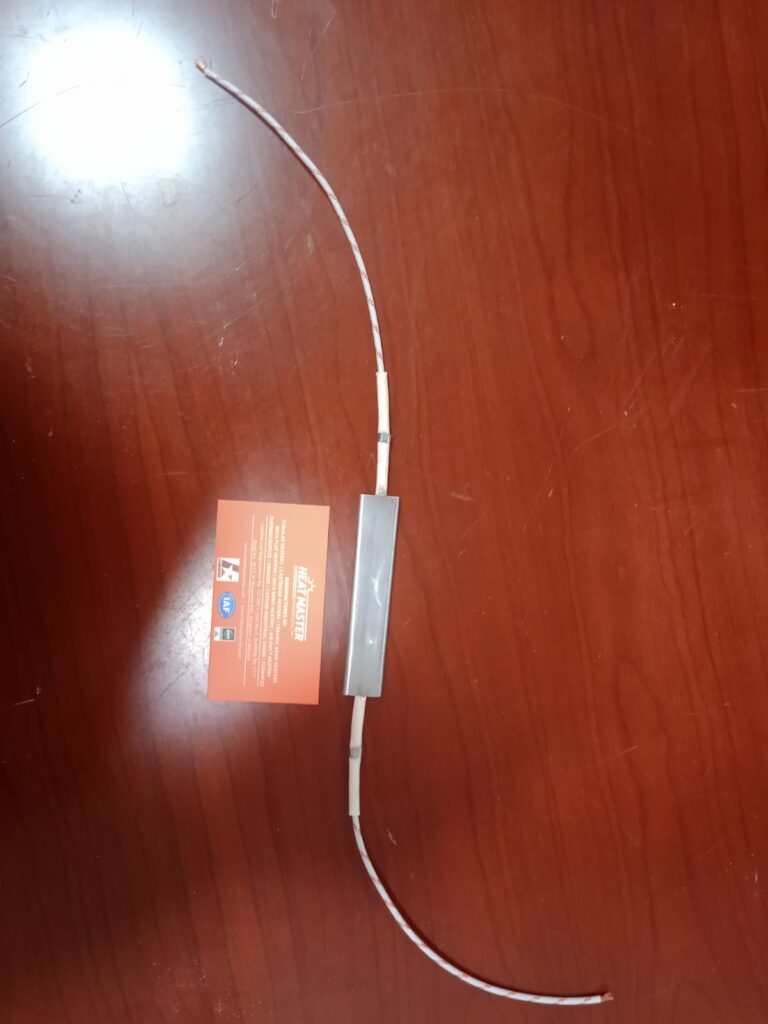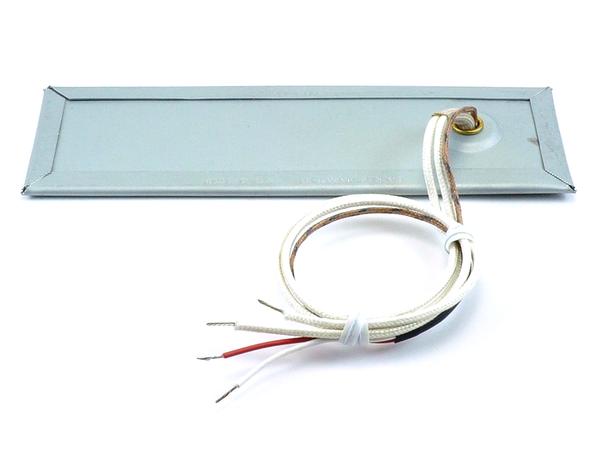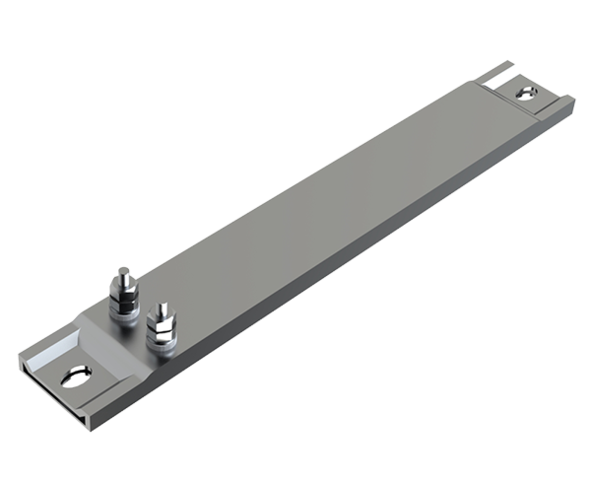Ceramic Strip Heaters
NH ceramic heaters can be used as a flat plate heater. The use of heavy gauge metal in the shroud and lip sides causes the heater to be more rigid. Mounting holes can be placed in the perimeter of the shroud. The use of ceramic inserts to support high-temperature resistance wire allows the NH ceramic heater band to operate at temperatures reaching 1,500 degrees Fahrenheit. Corrosion-resistant metal is slit along the edges to allow easy fitting of the shroud to the object to be heated. The radiant heating effect of ceramic heaters allows construction in widths greater than those in other types of heaters. Wider bands allow fewer heaters per zone and more uniform heat patterns
| Options: | |
| Sheath Material | Iron, Steel, 304 Stainless steel, Aluminum, Zinc coated steel |
| Watt Density | Up to 100 W/in2 |
| Voltage | 480V |
| Operating temperature | Upto 1200 °F |
| Length | 5 ½ to 48 inches |
| Width | 1 ½ inch |
Benefits and features –
- Easy and economical to install
- Corrosion and vibration resistant
- Durable, versatile and easy to control
- Uniform Heat Distribution
- Suitable for higher temperatures
- Nickle chrome resistance wire optional
- Screw or wire lead terminal
- Maximum sheath temperature: 400°C
- High heat transfer rates and fast heat up
- Ceramic construction for higher temperatures
- Long life
- Large selection of lengths, sizes and terminations
- Low expansion characteristics
- 3-Phase available
- Distributed wattage available
- Surface Heating
- Process Air Heating
- Winterizing
- Space Heating
- Food warming
- Packaging and sealing
- Laboratory equipment
- Autoclaves and ovens
- Sealing Bars
- Load banks
- Food warmers
- Incubators
- extruder equipment
- die heads
- injection molding equipmen
- chemical reactors
- Sizes- 1 ½” wide, 5/16” to 3/8” Thick, 5 ½” to 48” length
- Sheath Material- Stainless steel
- Maximum sheath temperature- 650°C (1200°F)
- Maximum Watt Density: 45 W/in2
- Maximum Voltage- 480 V
- Wattage tolerance- +5%, -10%
- Resistance tolerance- +10%, -5%










